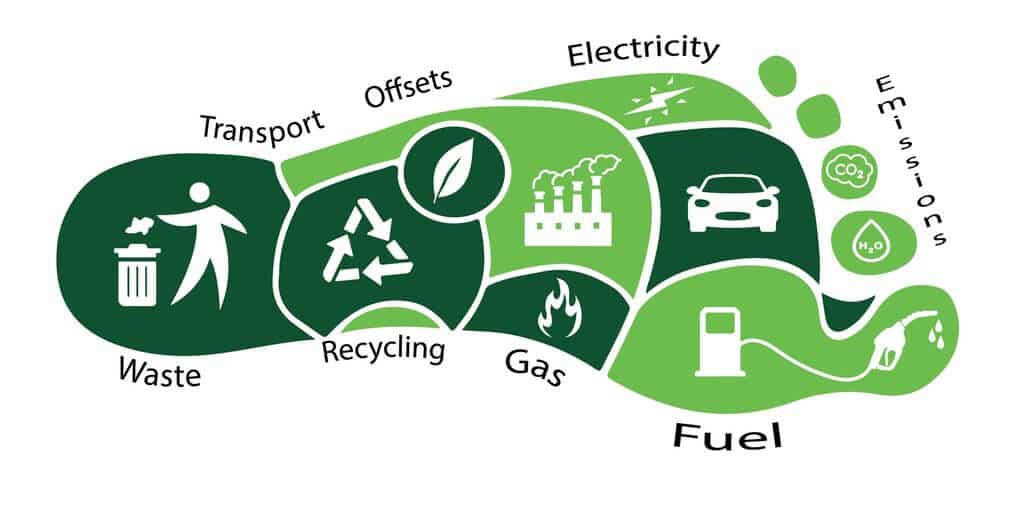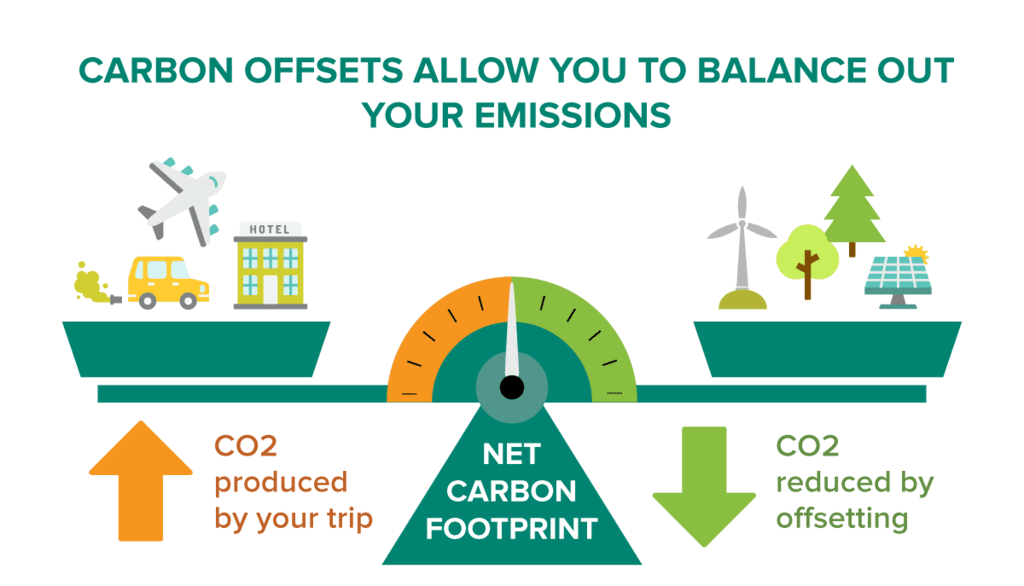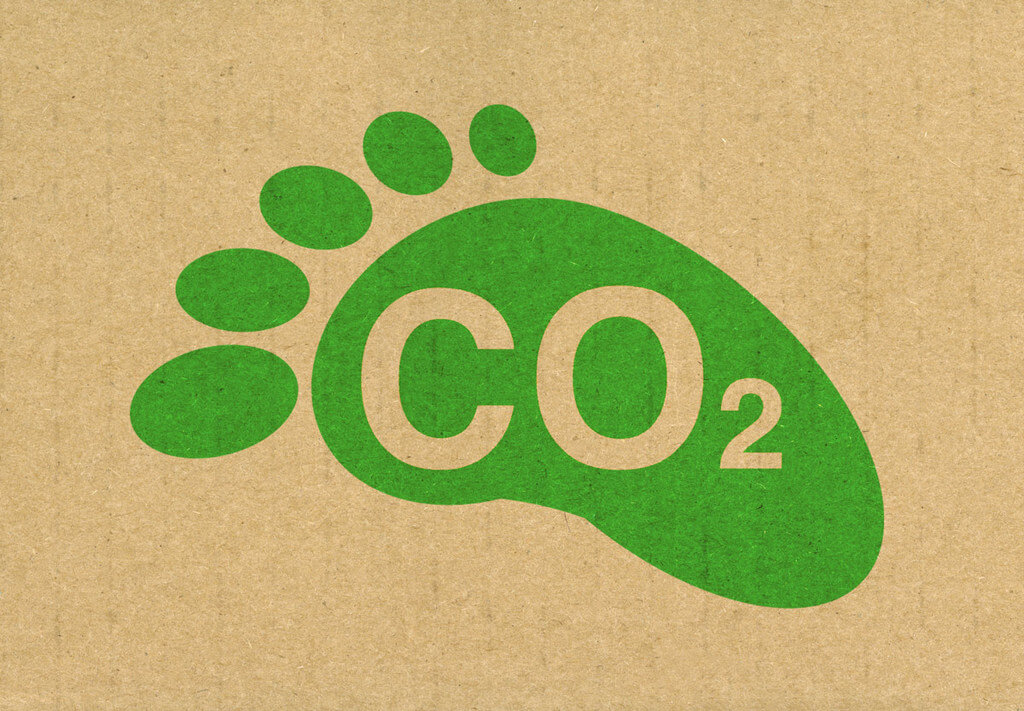It is high time that we start taking ownership of our contribution towards climate change. Why do you think this is necessary? Why does it matter?
Our generic lifestyle decisions account for creating major impacts on a macro level. Here a question arises- How can a small household contribute to a global impact? Think about millions of people initiating this small change, can we consider it as small then? By making our lifestyle as sustainable as possible we can curb the carbon footprint by a large amount. We can urbanize by taking sustainability in hand for a better and greener future.
We are living in a new age where a climatic emergency is on the verge, only a total revamp of our ways and lifestyle choices can indeed make a positive impact towards neutralizing our overuse. One of the major polluting elements adding to the greenhouse gases is our CO2 emissions. They are the largest contributors to climate change. And thus, there is a need for methods catering to carbon offset to curb the negative footprint by a larger margin.
What Is a Carbon Footprint?

Carbon Footprint is one of the most commonly used terms in our daily lives, but what exactly does it mean?
The dictionary definition of carbon footprint is “the amount of carbon dioxide released into the atmosphere as a result of the activities of a particular individual, organization or community.”
Carbon Footprint is a major contributor to abusing the natural environmental conditions. Various factors add up carbon in the environment which can have both health as well as environmental effects in the long run.
Importance of Carbon Footprint

Tackling climate change is not an overnight job, everybody plays an equal part in initiating a small change to create a bigger difference. One of the best solutions is to decrease our carbon emissions daily by switching to alternative options that cater to less or zero carbon footprint.
One might mistake carbon emissions for vehicular aspects or any commute-based mode. This is untrue, carbon footprint can be emitted from various other ways. From building construction to overuse of materials, along with this an excess dependency on finite resources like petrol, diesel, etc can increase carbon emissions. Improper waste management left untreated can also create a hazardous impact on the environment.
Almost everything we do in our daily life releases some amount of carbon into the environment. For example, when you buy food from supermarkets it is factory produced with machinery and other technicalities that require finite resources such as petrol, diesel, etc to function. This along with transportation which is also dependent on finite resources indirectly adds up to the carbon footprint. Therefore, to tackle climate change and reduce the effects of carbon footprints we need to think deep right from the origin of a commodity.
Carbon Offsetting
Carbon Offsetting can be one of the most efficient ways to reduce our carbon footprint by equalizing the usage than overpowering the negative usage in one go. We can start carbon offsetting by investing in environmental projects and solutions. Green packaging for products to sustainable and green-rated buildings can be effective measures to curb climate change. Replacing or altering finite with infinite resources in a gradual manner can help in carbon offsetting in our cities.
How Can We Start Carbon Offsetting on a Smaller Scale?

The main factor here is to look at the current availability and optimizing its usage rather than exhausting the available resources. We need to think about the coming years and the future generation, and that’s why we need to conserve the availability. The current abundance can be tomorrow’s scarcity or worse, EXTINCTION!
A carbon footprint calculator is an efficient way to calculate your carbon emissions within a household. You can map your carbon consumption by adding values of your electricity, water, landscape, renewable resources, etc.
The Committee of Climate Change states that the average household produces 8 tonnes of carbon emissions in the environment. In which around two tonnes comes from heating your homes which adds 1.25 tonnes more to the electricity usage. This is the main reason why the residential carbon footprint is larger than the commercial footprint. Therefore, there is an active need to start carbon offsetting on a residential level first.
- Carbon footprint can be curbed down by simple measures like buying from local stores or local resources.
- Commute-based checks can be kept on a day-to-day basis by switching to environmentally sound fuels such as solar, electricity, etc.
- Home appliances can be switched to energy-efficient options by using LEDs, CFLs, etc.
- Regular water heaters can be exchanged with Solar Water heaters, which are much more efficient and cost-friendly.
- Water management systems by using dual flushing systems, aeration tanks, etc can be done to use water more efficiently, thus avoiding wastage of resources.
- Waste management systems in a small household can also have a positive impact in the long run, sewage tanks and treatment tanks can be used for the same.
- Landscaping your households with plants or shrubs can go a long way in making the air more cleaner.
How to Calculate Carbon Footprint?
Measuring your carbon footprint can be an accurate way to modulate your lifestyle needs. You can measure your carbon footprint by calculating the total output of greenhouse gases that are emitted by your household or organization.
Although, one aspect you need to consider is that ‘carbon’ is an element that is used as a short form for all the polluting gases. Also, it is the most dominant one among all the gases that contribute to your carbon footprint. Measuring your carbon footprint allows you to be in sync with the changing environment by adapting to a changed lifestyle much more easily. At the same time, it also helps you in creating a resilient business.
There are several carbon footprint calculators provided by various organizations. The Annual Carbon Emissions calculator (ACE) is one such method to collect your data. It is a basic excel workbook with sheets for adding all the necessary usage on a monthly basis. It also automatically generates graphs of all the cumulative emissions. Data like waste generation, energy use, refrigerant loss, travel can be entered into the appropriate month’s sheet to keep a detailed track of your carbon emissions.
Which Industries Are Greatly Responsible for Carbon Footprint?

Greenhouse emissions include CO2, Methane, Nitrous Oxide, and other F-gases. These carbon emissions take place through several methods from farming to deforestation to several other industrial processes. The World Resources Institute (WRI) has broken down the total global emissions from 2005 in various headline sectors to calculate the carbon footprint of each industry.
The Carbon footprint of electricity and heat accounts for 24.9%, whereas 14.3% of global carbon emissions are produced through transportation activities. The industry sector takes up 14.7% of the Carbon emissions whereas other fuel combustion and fugitive emissions are 8.6% and 4% respectively.
The Agricultural sector accounts for 13.8% of carbon emissions with Land use changes and alterations on a 12.2%. Even our daily waste gives 3.2% of carbon emissions. These main sectors are then assigned to various other end uses such as Road Transport (10.5%), Air Transport (1.7%), Other Transport (2.5%), etc. The fuel power for residential buildings goes up to 10.2% of carbon emissions, whereas that for commercial buildings is 6.3%.
Other industries like Iron and Steel Production (4%), Machinery Production (1%), Pulp, paper and printing (1.1%), Food and tobacco industries (1.0%), Cement production (5.0%), Chemicals production (4.1%), Coal mining (1.3%), Deforestation (11.3%), Livestock and manure (5.4%), etc. also emit a considerable amount of carbon.
One important point to note here is that the carbon emission level keeps on changing permanently. The total global emissions now are higher than they were in 2005 due to the increased population, demand, urbanization, etc.
Many Multinational Companies and organizations like Apple, Google, Microsoft, Starbucks, Nike, Tesla, etc are planning to go carbon neutral by the year 2050.
Microsoft has hired several third-party organizations to keep tabs on their carbon footprint. They plan to make the organizations have a zero carbon footprint by the year 2030. The inclusiveness of these MNCs towards a common green goal has brought many smaller organizations to take inspiration and start their way of reducing carbon emissions.

Pros of Reducing our Carbon Footprint through Sustainability
Air Quality
When we opt for measures that help in reducing carbon emissions our air quality indirectly improves. Carbon Dioxide accounts for making the air polluted, the absence or negligible amount of it improves the air quality by a larger margin. The user group has various health benefits as well as better visibility in their neighborhood due to this inclusivity of sustainability within their concise space.
Economic Growth
Reducing the carbon footprint, in turn, reduces our dependency on finite resources. An increased dependency on infinite resources increases the economy as now the core source is freely available and that too in abundant quantities.
Awareness
To increase awareness, the government has even started giving subsidies, ROI on clean energy investments, and compensations when opting for infinite sources like solar, wind, etc.
Slow Climate Change
Carbon offsetting and reduced carbon emissions slow down the climate change process by making our cities greener and liveable as well as saving the environment.
Cost Savings
Reduced carbon footprint also reduces the monthly electricity bills as the user group becomes more dependent on infinite resources that are freely available.
Cons of Reducing Our Carbon Footprint Through Sustainability
- Although sustainability has more merits than demerits, it is not always carbon neutral. For example – solar energy tends to produce some amount of carbon from its attached generators, batteries, etc. However, the impact of this is far less than using finite resources for the same.
- The initial cost of sustainable measures is higher but the running cost is almost zero or negligible for many resources.
- Sustainable measures such as solar panels, wind turbines, etc can have security issues as they need to be elevated in an open space where natural resources are available in abundance.
- In areas where the sunlight and wind are unpredictable, dependency on sustainable measures can be less economical as they function in natural conditions. Due to this, installing solar panels, wind turbines, etc requires thorough research and planning.
What Is the Importance of Carbon Footprint?
The future is an asset that can be prone to instability if we don’t act on it now. A carbon-neutral future on a global level can help in targeting our carbon emissions to make our future cities more sustainable and greener.
A liveable city is fueled by a lesser dependency on finite resources and more adaptability towards infinite resources. By adopting small lifestyle changes towards a green future we can curb down our carbon footprint by a larger margin. This can in turn give rise to cities that are more conscious of the user group as well as the environment.
FAQs
Carbon footprint is the total amount of greenhouse gases that are generated by the current user group. The average carbon footprint for a user in the United States is 16 tonnes, making it one of the highest rates in the world. Although, globally the average is less than 4 tonnes per user.
There are many ways through which you can reduce your carbon footprint, the easiest way is to – reduce, reuse, rot and recycle all the materials which have the potential to do so. Commuting through bikes or sustainable vehicles like electric or solar can be done. Another method is through conserving water, eating more local and natural, switching to sustainable and energy-efficient methods for daily dependency, etc.
49 billion tonnes is the pollution and impact that we create globally on our ecosystems. The core reason behind it is the addiction to finite resources like fossil fuels, burning, etc which contributes around 30 billion tonnes of carbon dioxide to the environment.
As per a study, a reduction in the emissions of greenhouse gases can help prevent premature deaths up to 3 million by the year 2100. These researches and studies have clearly shown the positive impact that a reduced carbon footprint can have on the environment making it necessary to reduce our negative impact on the environment.
You might not be familiar with this, but emails account for our carbon footprint. A spam email can produce 0.3g Co2e whereas a regular email can produce 4g. An email with a hefty attachment or photograph can produce 50g Co2e in one go. Although, on an individual level these carbon footprints can seem smaller, on a global level they can have a massive impact.
Note: Co2e (carbon dioxide equivalent) is a standard unit to measure carbon footprint.
Let’s Curb the Carbon Footprint
Our future cities are entirely dependent on our current use. The more resources we overuse, the more we head towards extinction. Curbing the Carbon Footprint can be one of the most beneficial methods to slow down climate change. It is not about revamping your entire lifestyle but one can always start by making small yet effective changes on a consistent level.
It is time now, that we start treating our finite resources as a treasure rather than a luxury!
Keep reading:-

